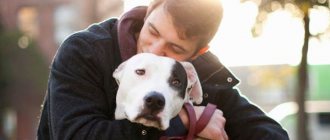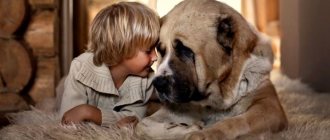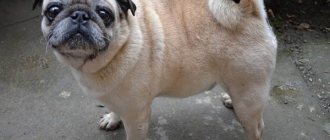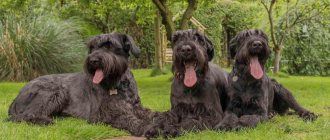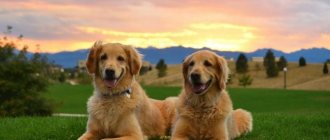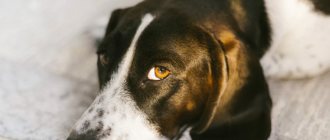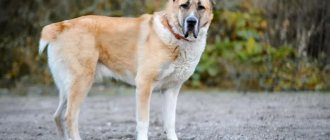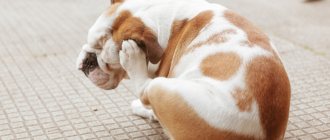Brief characteristics of the dog
- Other possible names: Icelandic Spitz, Icelandic Sheepdog, Icelandic Sheepdog, Farehond Friaar Dog, Icelandic Fairhund.
- Adult height: from 42 cm to 46 cm.
- Weight: from 10 to 15 kg.
- Characteristic color: red and white.
- Coat length: short or long, fluffy.
- Life expectancy: 12-14 years.
- Advantages of the breed: friendly, intelligent, inquisitive, active, hardy.
- Difficulties of the breed: the long-haired species requires care.
- Average price: $300-$500.
History of the breed
Although very little evidence has been preserved about the time of the settlement of Iceland, ancient sagas and legends say that Icelandic sheepdogs came there along with people. They are the only native breed to these harsh islands, to which they have adapted through centuries of isolation.
The hardworking nature of the breed, its devotion and loyalty to its human companions were deeply revered among the people. They valued and revered these dogs so highly that they buried them as people.
Iceland's extreme climate created many problems, and there was a great famine in the 10th century. To survive, people killed and ate dogs, and only the smartest, healthiest and most needed managed to survive.
Since there were no large predators on the islands, or any animals in general, this meant that Icelandic Sheepdogs were not used as hunting dogs, and their character became friendly and strongly people-oriented.
Usually they were used not so much for guarding the herd, but for control and herding. They knew every sheep in their flock, distinguishing them from each other by smell. It is said that the Icelandic watchdog is so successful in this that he can find a sheep buried under several meters of snow.
Excellent cattle dogs, they are still used for this purpose and can handle larger animals such as horses. Cattle breeding received particular development in the Middle Ages and Icelandic dogs were often imported to neighboring countries. Especially in Great Britain, where they became favorite among the nobility and they compiled the first written descriptions of the breed. A merchant and navigator named Martin Behaim mentions them in 1492.
Documents about the breed continue to appear in the following years. Swedish author Olaf Magnus writes in 1555 that these dogs are very popular among Swedes, especially among women and priests. And in 1570, John Claus again names Icelandic dogs as one of the most popular among the British nobility.
Over time, this popularity spread throughout Europe and in 1763 these dogs were known even in Poland. Despite this, by the beginning of the 19th century, Icelandic guard dogs were on the verge of extinction.
The outbreak of an epidemic among sheep spreads to dogs, instantly spreading and destroying the animals. About three-quarters of dogs die as a result of the epidemic.
Due to a significant reduction in the population (including among reference breeders), dogs are beginning to be imported into the country from abroad. The author of a book about Icelandic Spitz, Christian Schierbeck traveled around the country in search of purebred dogs. He managed to find only 20 dogs that matched the original characteristics and those in remote peasant farms.
At that time, purebred Icelandic dogs were so rare that the price of a puppy was equal to the price of a good horse or several sheep. The government banned the import of dogs in 1901 to protect the population.
Gradually, the breed was restored and in 1969 the first club was created - Icelandic Dog Breeder Association (HRFÍ), in 1979 the second - Icelandic Sheepdog Breed Club. Club members are involved in drawing up a breed standard and breeding.
At the moment, about 4 thousand dogs are registered. Despite more than 1,000 years of history, the breed was not recognized by the AKC until July 2010.
Brief historical background
The history of the Icelandic Shepherd is rather vague. It is believed that their ancestors were the ancient Scandinavian Spitz-shaped dogs, which came to the territory of Iceland around the 9th-10th centuries. At first, the animals helped their owners in the hunt, but then, due to the lack of a large amount of game, they retrained as shepherds, expertly using the scent to find missing ones, strays from the herd, and stray sheep.
The appearance of the Icelandic dog has not changed for hundreds of years
Since then, the Icelandic Shepherd Husky has existed almost unchanged, because very few foreign dogs were brought to the island. An epidemic of an unknown disease that occurred in the 19th century, which first affected sheep and then spread to their four-legged shepherds, destroyed almost the entire livestock, as a result the breed was on the verge of extinction. The government took up its revival, issuing a decree in 1901 banning the export of representatives abroad.
Gradually the number of animals increased, in 1972 recognition was received by the world canine community, and at the same time the first breed standard was described. In the FCI registry, the Icelandic Sheepdog is included in group 5 “Spitz and dogs of a primitive type” (section 3 “Scandinavian guard and herding dogs”) under number 289. The last updated and current standard dates back to June 20, 2007.
Now the Icelandic Spitz is not in danger of extinction, but their numbers are small - about 16 thousand individuals.
Appearance
In appearance, shepherd dogs from Iceland resemble Welsh Corgs - the favorites of the Queen of England and the smallest shepherd dogs in the British Isles. Dogs have approximately the same body weight - 10-15 kg, but Icelanders have longer legs and therefore their height at the withers can reach 48 cm, and not 30 cm, like Corgis. In height, Icelanders are close to Malinois shepherd dogs - herding dogs from Belgium.
The Icelandic dog has a fox-like muzzle. Dogs have protruding, straight, triangular ears, wide at the base, lips that fit tightly to the muzzle. A dog's nose can be black or dark brown. The bite of the teeth is scissor-shaped. The eyes are small, round, dark.
Shepherd dogs from Iceland have a strong neck, a short strong proportional body, muscular withers and limbs, a strong back, an elastic lower back, a wide chest and croup, a well-tight stomach, and oval-shaped paws.
The dogs' tail is set quite high; they hold it curled into a ring above their back. The body and tail of dogs are covered with thick hair. According to the quality of the surface coat, shepherd dogs can be short-haired, with a slightly coarse coat of medium length and a soft, dense undercoat, or long-haired, with a very coarse coat and a soft undercoat. The length of the hair on the face, ears, and front legs is shorter than on the neck, behind the ears, on the chest, hips, and hind legs.
Buying a puppy
This is a rare breed, so buy puppies only from a trusted breeder.
Icelandic dog puppies are small, chubby dogs with fluffy and soft fur.
First, pay attention to the presence of vets. passports, make sure of vaccinations, look at the pedigree, monitor the puppy’s behavior. A child should not be afraid to approach a new person. It should have a short muzzle, strong legs and build, dark eyes and nose. The ears may not stand up in childhood, but the triangular shape remains.
The main indicators of the “purity” of the breed are clean eyes and healthy coat. This is something you should pay attention to first when choosing a puppy.
You can purchase a puppy with documents that confirm its thoroughbred in nurseries in Iceland and America. There is no national Icelandic Sheepdog club in the system of the Russian Cynological Federation.
The average price ranges from 15,000 to 25,000 rubles.
Purpose of the breed
Icelandic dogs are almost never used for their original purpose, that is, they can rarely be seen hunting. But in some areas of Iceland they still occasionally herd livestock.
A good sense of smell allows, in some cases, to use Irish Shepherds to search not only for animals, but also for people. Most often, they serve as simple pets, and sometimes as vigilant watchmen. They are also regulars at exhibitions and participants in various competitions.
Content
The Icelandic dog is completely unsuited to living in a city apartment. Since it was originally used as a working breed, it simply needs regular exercise, as well as constant vigorous activity. That is why it is best to keep such a dog in a private house or on a farm, where there will be plenty of free space for it to walk or there will be some kind of work.
The Icelandic Laika can also be used when hunting small game, but it can still be more useful if it guards livestock.
As mentioned above, shepherd huskies never managed to gain popularity in Europe, remaining known only in the territory of their historical homeland. They are still used there as shepherds and guards. In addition, they have become part of the bright, original national color of Iceland, which attracts tourists from all over the world.
Character and behavior
Judging by the description of Icelandic Sheepdog breed experts, these dogs are not capricious in everything. They perceive life as a holiday. They always have joy and friendliness shining in their eyes. Modern dogs have inherited from their ancestors the ability to protect. Once upon a time, shepherd dogs searched for lambs lost in the snow and protected them from attacks by birds of prey. Now they also have the habit of being vigilant and observing what is happening around them. Dogs will always rush to protect their owner, his children, a puppy or a kitten in a moment of danger.
Without training or training, they will be able to open the door of a bedside table or cabinet just to find out what is inside. During a walk, the pet will never go far from the owner, always watches him and comes running at the first call.
Dogs cannot stand being alone; from puppyhood they must be taught that people can go somewhere. Otherwise, the pet will perceive parting with people very painfully. A dog living in an apartment must be provided with toys during absences, otherwise the neighbors will begin to complain about his incessant whining and barking, and the Icelanders have a ringing and loud voice. The best place to keep it is a country house with an outdoor enclosure, a booth and plenty of space for walking.
Education and training
Dogs from Iceland have a lively mind, are observant, flexible, and are easy to accustom to everyday life. Puppies quickly socialize and learn hygiene. Dogs can be both beloved companions and household helpers. They quickly remember commands and carry them out with joy. For them, learning is more of a game than a responsibility.
Note! The physical characteristics of Icelandic Shepherds allow them to participate in freestyle and agility competitions.
Character
The animal has a calm, friendly and cheerful disposition. She is an affectionate, loyal and loving dog. The Icelandic Husky gets along well with other pets. In addition, she gets along well with small children.
Animals of this breed almost never show their aggressiveness, except when they feel some kind of danger. They quickly become attached to people and love to be in their company. If such a dog is left alone for a long time, it can experience great stress.
Icelandic dog: conditions of detention
Oddly enough, although the dog is small, it is not suitable for living in a city, in an apartment. Firstly, this is a very active dog that requires a lot of space so that it can get the physical activity it needs. Twice-a-day parties are not enough here. Secondly, this breed requires not only physical, but also intellectual stress. This is problematic in an apartment; she quickly gets bored. Thirdly, don’t forget that this dog loves to “talk” - your neighbors definitely won’t like it.
Care
These are fairly unpretentious animals to care for. The maximum that is required of you is infrequent washing as needed, brushing once a week (more often during the shedding period) and minimal ear care. You should also keep an eye on the claws. And don't forget about regular flea and tick treatments. But most of these recommendations are relevant for all breeds, so we can say that the Icelandic dog does not need any special care - after all, it is a Viking dog!
Hygiene
Grooming involves periodic brushing. Regularity of the procedure will reduce the likelihood of matted fur and remove accumulated dirt. It is enough to brush your Icelander once a week. But during the molting period (spring and autumn), the procedure must be carried out more often. Grooming of this breed is not practiced.
Nails are trimmed as they grow. Do not neglect the procedure, because there are often cases of claws growing into the fingertip.
Washing your dog frequently is not recommended. Frequent bathing leads to the fact that the natural protective fatty film on the animal’s skin is washed away. As a result, the skin becomes dry and irritated, and the dog’s resistance to frost decreases.
It is necessary to clean the ears 3-4 times a month. The eyes are rubbed as discharge appears on them.
To prevent the appearance of fleas and ticks, it is necessary to use special collars or repellents (insect repellents).
Hygienically, caring for an Icelandic dog is kept to a minimum: regular brushing, ear cleaning and nail trimming.
Walking and exercise
Icelandic dogs cannot live without movement, they have a lot of energy and if they do not splash it out, they will begin to become decrepit early, although the average life expectancy of these dogs is 14 years. Therefore, daily 2-hour walks are mandatory.
There are practically no genetic diseases in this breed. Sometimes cases of hip dysplasia are detected, but treatment of the disease with timely consultation with a veterinarian occurs without complications. Older Icelandic Shepherds are prone to eye problems. Dogs are vaccinated according to a schedule agreed with veterinarians. Vaccinations against rabies (at 6 months), against plague, parovirus (at 6-9 weeks), a second vaccination against rabies and leptospirosis (at 12 months) are required.
Nutrition
In general, it is noted that animals belonging to the Icelandic breed are not demanding in relation to their diet. However, even despite this, you cannot neglect planning your four-legged friend’s meals and feed him scraps from the master’s table. It should be remembered that one way or another, the animal’s nutrition should be healthy and balanced. Try to saturate it with the maximum possible amount of useful components that will ensure the active growth and development of the animal.
As the basis for your pet's nutrition, you can choose ready-made dry mixtures and food that are sold in pet stores and zoological markets. This option may seem more convenient and comfortable for those who do not like to cook and want to make the task of providing food for their pet as easy as possible.
However, if you choose this option, then before buying this or that food, you should consult with a specialist in advance and find out whether it is suitable specifically for your pet . In addition, in this case you will need to purchase various nutritional supplements and vitamins necessary for the animal’s body.
The second option is considered more budget-friendly, but it is time-consuming. So, you can feed your Icelandic Shepherd with natural products that you eat yourself. The dog's diet should consist of cereals, vegetables, fruits, dairy products, as well as lean meat and fish. Remember that when choosing natural food, you must prepare food for your dog separately. They must be fresh and of high quality. Under no circumstances should you give your pet expired, spoiled or stale food. You should also avoid feeding him scraps from your table.
Origin
The first breeds of dogs arrived with the settlers. The Icelandic Sheepdog, also known as the herding husky, dates back to the distant 9th century. It is known that its ancestors are the dogs of the Celts and Germans, who settled these territories in the 5th century straight from Ireland and Scotland, and a few years later from Norway. It is worth noting that farming settlements had a different attitude towards Icelandic dogs. Despite their small size and gentle temperament, shepherd dogs were so brave that in the event of an attack by predators, they instantly showed unusual anger, protecting the herd until their last breath.
People could not find better guards, because the dogs not only guarded the sheep, but also accompanied them to the meadows and back to the folds. Dogs lived on the street, but love forced people to consider dogs as full-fledged members of the family.
There have been dangerous moments in the history of the breed. So, during the period of exacerbation of the plague, many dogs could not be saved. It was possible to restore the population through the great efforts of American and Icelandic dog breeders. The dog's distinctive features were officially adopted in 1898 in Denmark and Great Britain. Unfortunately, the species never managed to gain worldwide popularity, since there are only 3.5 thousand animals.
Pregnancy and childbirth
Pregnancy in dogs lasts 56–72 days. The number of puppies in the litter depends on the age of the female. The maximum number of puppies is born in dogs 3–4 years of age. During pregnancy, it is necessary to pay special attention to the nutrition of the expectant mother.
During childbirth, the female becomes anxious. Due to the strong emotional connection between the dog and the owner, his excitement is transferred to her. Therefore, the pet owner needs to prepare for the birth and be calm so that the pet does not experience even more severe anxiety.
Tendency to diseases
Like most hunting and herding dogs, Icelandic dogs have very good health. This is due to the natural selection that they went through during the entire period of their existence. The strongest, hardiest animals with good immunity survived in harsh conditions. They practically independently obtained their own food and found shelter from bad weather.
Representatives of this breed are prone to hip and elbow dysplasia and luxation of the patella. Both ailments, as a rule, do not cause much trouble for the dog and are sometimes discovered during a regular examination by a veterinarian.
The “Dog Doctor” and your pet are visited at least once a year. The veterinarian examines the animal and vaccinates it. The Icelandic woman tolerates examinations and procedures calmly, especially if the owner is nearby.
On average, these dogs live 12–14 years, remaining active and good-natured until old age. With proper care, proper nutrition and sufficient (but not excessive) physical activity, they can live 2-3 years longer.
Table: vaccination schedule for the Icelandic dog
| Age | Vaccination |
| 6 weeks | Plague, parvovirus |
| 8–9 weeks | Plague, parvovirus, hepatitis, parainfluenza, adenovirus |
| 12 weeks | Revaccination |
| 6 months | Rabies |
| 1 year | Rabies, leptospirosis |
| 3 years | Revaccination against all diseases, including leptospirosis and parainfluenza, is carried out every year |
Icelandic dogs are wonderful four-legged friends with a long history as a breed. Cheerfulness, boundless love for the owner, devotion and kindness make dogs of this breed ideal pets. The Icelandic Shepherd Husky is suitable for an active person who is ready for long walks in the fresh air.
Body type
The Icelandic dog's build is more elongated than slender. Wide back with well-developed muscles. Withers of uniform shape. The croup is rather short and voluminous, slightly sloping. The ribs are slightly arched, resembling an arch.
The shape of the chest is quite deep and wide, and its front part protrudes slightly above the front legs, while the chest bone does not move forward much.
Wool
Icelandic dogs can have two types of coat - short and long. Each has good density and water resistance. The outer layer is densely planted, straight and may be flat or slightly ruffled. The structure of the undercoat is more delicate and dense. The covering on the paws, ears, muzzle and skull is shorter than on the body. The longest hair covers the hind legs, neck, chest and back. There is also a visible difference between males and females.
Color
The fur of purebred herding huskies is traditionally colored in light shades. The following color combinations may be found:
- White with cream.
- Black and white.
- Gray with white.
- Golden with white.
- Beige with white.
- Chocolate shade with white color.
Advantages and disadvantages
Icelandic Shepherds are excellent family dogs with virtually no faults . They are incredibly loyal and so attached to a person that they always try to be as close to him as possible. True, sometimes they can get in the way and get under your feet.
The desire to please and high intellectual abilities allow the Icelandic dog to learn quickly and remember everything well . And activity and mobility often make her a champion in various types of dog sports.
But such an energetic dog requires long daily walks. Therefore, it is not suitable for sedentary people , or as a sofa pet.
These are very cheerful and cheerful dogs who love to frolic and play . Often other pets also participate in these games, on which, even during entertainment, the Icelandic Shepherd shows its herding instinct, not allowing them to leave the territory and trying to keep everyone in one place. The same applies to children, with whom such a pet has a wonderful relationship.
The Icelandic Sheepdog does not forget about protecting its territory. She will always notify the arrival of guests, and in some cases she will be able to bravely protect the owners from uninvited strangers . Although the dog treats strangers with some distrust, when he sees the joy on the owner’s face, he immediately becomes peaceful and affectionate.
These dogs are very dependent on human communication and have difficulty withstanding loneliness . And some breeders even recommend trying to give such a pet as much attention as possible until the age of eighteen months, gradually teaching it to be left alone.
Icelandic Shepherds are affectionate and loving . They know how not only to receive, but are also ready to give all their tenderness in return and become a faithful companion for their human family.
Description of the nature of the breed
Four-legged friends are distinguished by their intelligence, good nature, and intelligence. Well-developed intellectual abilities allow them to be taught various sports. A restless, active character forces the dog to stick its nose into all events and actions on the part of the owners. Cheerfulness determines communication with other animals and allows you to play with children. Throughout their lives, they show devotion and great love for their owners, helping them in everything.
They can constantly stay nearby, even sleep at your feet. They cannot remain without people, they are always obedient and good-natured. Icelandic Shepherds have a highly developed sense of smell, but they will not touch even an unfamiliar guest, they will only notify him of his appearance by barking. A special feature of the shepherd is its immediate reaction to objects moving from above. This is explained by the centuries-old instinct of protecting sheep from harmful vulture birds.
Choosing a puppy and its cost
Buying a small Icelander is not easy, since there are literally only a few of them in our country. For a puppy, it is better to contact specialized nurseries located in Denmark, Sweden, in their homeland of Iceland or in the USA. A conscientious breeder will definitely provide the necessary set of documents (parental pedigrees, puppy statistics, etc.) proving the fact of the pet’s thoroughbred.
The cost of a puppy can vary from 30 to 35 thousand rubles, depending on the status of the nursery and the prospects of the baby himself.
It is not recommended to buy dogs offered through advertisements or by hand, since purebred Icelandic Shepherds are often passed off as different crossbreeds with huskies. Only an experienced dog handler can distinguish them visually.
Sources
- https://www.moiasobaka.com/vse-o-porodah/srednie/islandskaya-sobaka.html
- https://catfishes.ru/islandskaya-sobaka/
- https://gafki.ru/sobaki/islandskaya.html
- https://prohvost.club/sobaki/porody-sobak/islandskaya-ovcharka-foto.html
- https://alldogs.info/%D0%B8%D1%81%D0%BB%D0%B0%D0%BD%D0%B4%D1%81%D0%BA%D0%B0%D1%8F-% D1%81%D0%BE%D0%B1%D0%B0%D0%BA%D0%B0/
- https://kot-pes.com/islandskaya-sobaka-foto/
- https://vplate.ru/sobaki/islandskaya/
- https://DogGav.ru/porody/srednie/islandskaya-sobaka.html
[collapse]

